AO Edited
St. Foy’s Golden Reliquary
The huge golden reliquary of a testicle-smashing saint.
Pilgrims pray to saints for holy intercession in all kinds of problems, but they should be very careful what they ask for when approaching St. Foy, who seems to have a wicked sense of humor. Foy’s relics are housed in an elaborate golden reliquary in Conques, France, where they have been visited by the faithful for more than a thousand years.
The monastery was founded in 819, and led a quiet life of contemplation for the first 50 or so years of its existence. By 866, the monks were ready for a little more attention, and so they set their sights on acquiring a genuine relic, the key to bringing religious pilgrims—and their coins—to Conques. To this end, one of the monks was dispatched to join a different monastery in Agen, which just happened to be the home of the relics of St. Foy, reputed to cure blindness and free those in captivity.
In life, St. Foy was a Roman girl martyred in the town of Agen as part of the Diocletian persecutions in 303. Legend holds that the 12-year-old girl was first placed on a red hot griddle, and when holy intervention stopped that from killing her, she was beheaded. After death, her relics performed the usual assortment of miraculous cures and visions, making them a crowd-pleasing feature of the church—which is precisely why the Conques monk stole them from Agen and relocated them to the monastery in his town.
And so, the pilgrims came. As the story goes, St. Foy developed her reputation for… unusual cures. Notably, when a knight came to her seeking a cure for a herniated scrotum, she, via vision, helpfully suggested that he find a blacksmith willing to smash it with a white-hot hammer. Amazingly, this gentleman followed her divine instructions and was committed to this terrible plan right up until the last minute, when he fell backward, away from the hammer’s strike—and was miraculously cured by the force of his fall.
The saint’s relics are still held in the golden reliquary in the shape of a woman that dates back at least to 1010. It is a 33-inch wooden statue covered in gold and gemstones, with a bust made from a repurposed Roman helmet. The manly face of the reliquary has actually caused some debate—some scholars see the face of a Roman emperor, while Thomas Hoving suggested that it was a death mask of Charlemagne. Regardless, not only is this one big, golden statue, it is also the last remaining example of its type, once common in the middle ages.
The church is decorated with scenes from the life of the saint, as well as a large carving of the last judgement outside, in the tympanum over the main doors. The monastery at Conques remains an important stop on the pilgrimage route of the Camino de Santiago, where pilgrims stop to visit the relics of St. Foy to ask for her blessings of safe travel.
The reliquary is no longer held in the church itself, but in a museum next to the cloisters. She is brought out every year on her feast day of October 6.







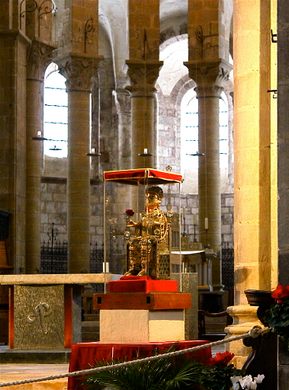
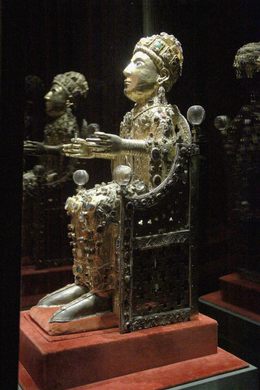

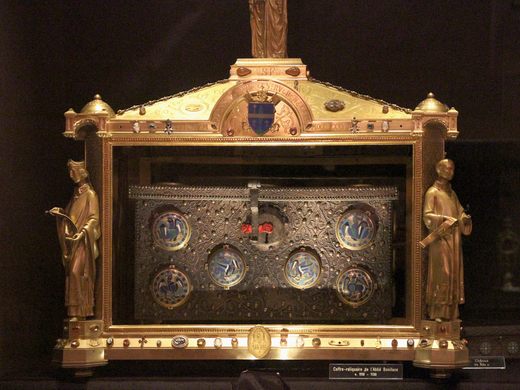




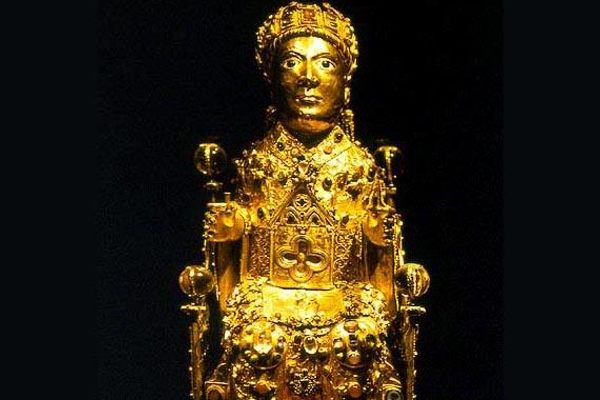









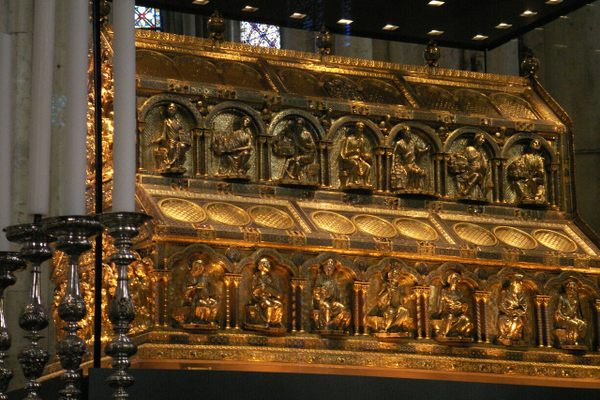




Follow us on Twitter to get the latest on the world's hidden wonders.
Like us on Facebook to get the latest on the world's hidden wonders.
Follow us on Twitter Like us on Facebook